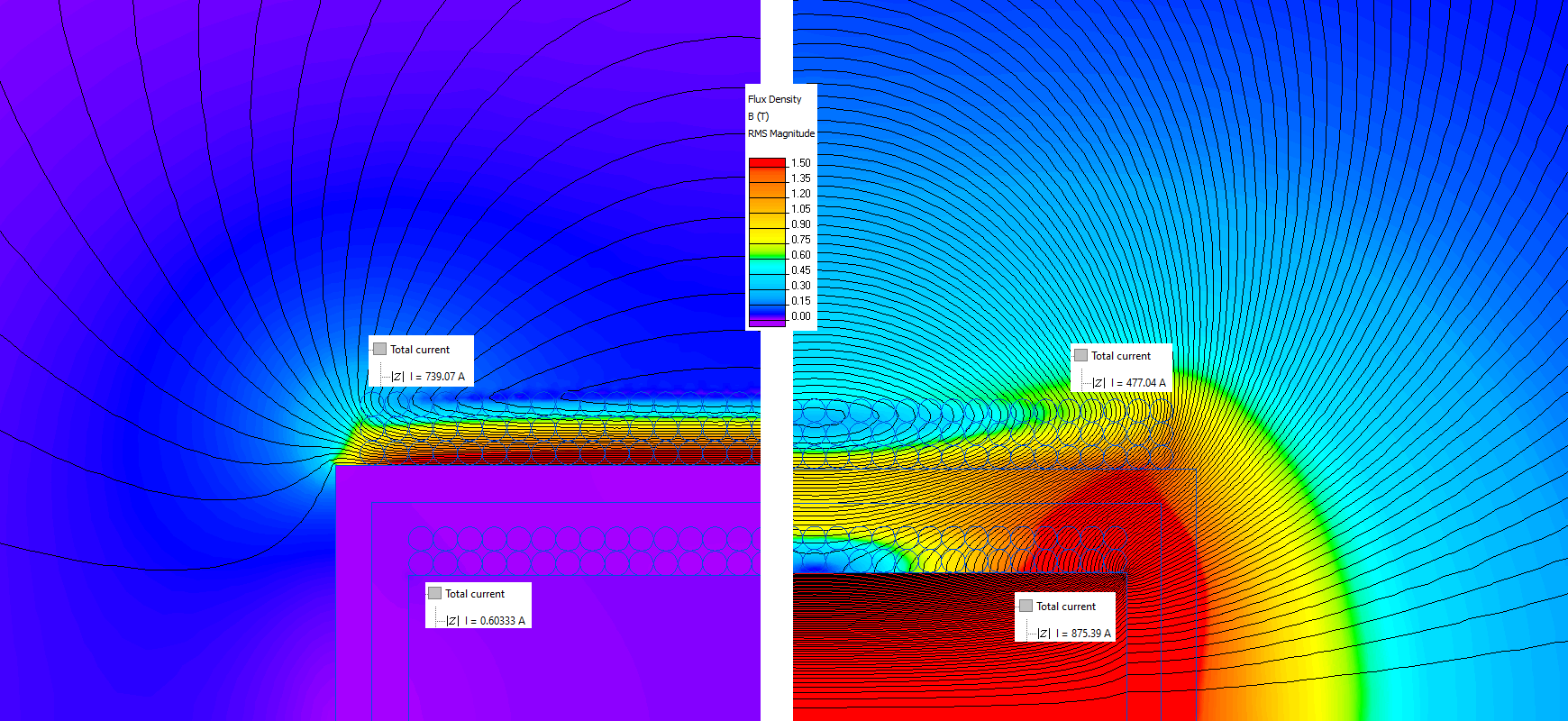Superconducting fault current limiter
QuickField simulation example
This simulation example is prepared by Professor James R. Claycomb as a part of the webinar Fault Current Limiter Simulations using QuickField.
An inductive superconducting current limiter utilizes the fact that a superconductor becomes a normal conductor at some critical value of magnetic flux density. Below the critical value the superconductor effectively screens the secondary winding. When the fault occurs, the current increases many times and its magnetic field causes the superconductor to come to a normal state.
Problem Type
Axisymmetric problem of AC magnetics.
Geometry
Given
Mu-metal permeability 10000
Primary winding number of turns is 93, secondary winding number of turns is 54.
Conductor diameter is 1 mm, copper conductivity 59.6 MS/m.
Voltage source 120 V, frequency 60 Hz.
Superconductor permeability in superconducting state is 0.00001, in normal state 1.
Task
Calculate the fault current.
Solution
First a hypothetic case is simulated - the superconductor remains in the superconducting state, despite the high value of magnetic flux density. This case reveals the maximum possible value of a fault current.
In fact, the superconductor becomes normal in intense magnetic field and that is the second simulation case. The fault current magnitude is calculated in case the superconductor becomes normal.
Results
A maximum possible fault current magnitude is 739 A. The fault current limiter reduces fault current magnitude to 477 A.
Left picture shows a hypothetic case simulation results, when the superconductor remains superconducting and fully screens off the secondary winding. Right picture shows a real case simulation result: the superconductor is in a normal state.

- Video: Superconductor fault current limiter. Watch on Youtube
- Download simulation files (files may be viewed using any QuickField Edition).